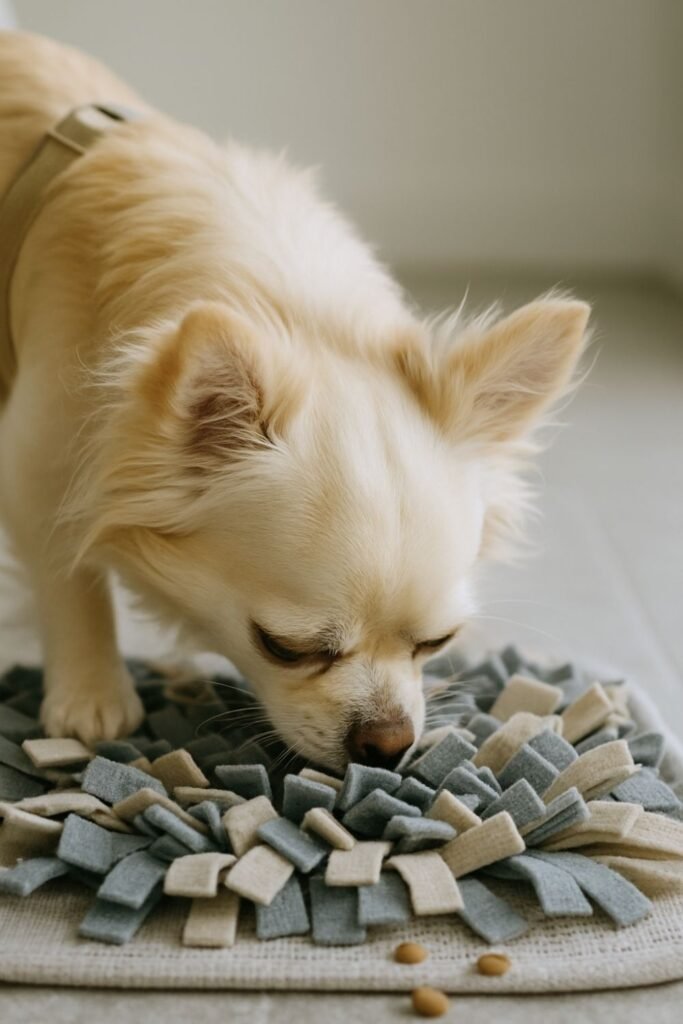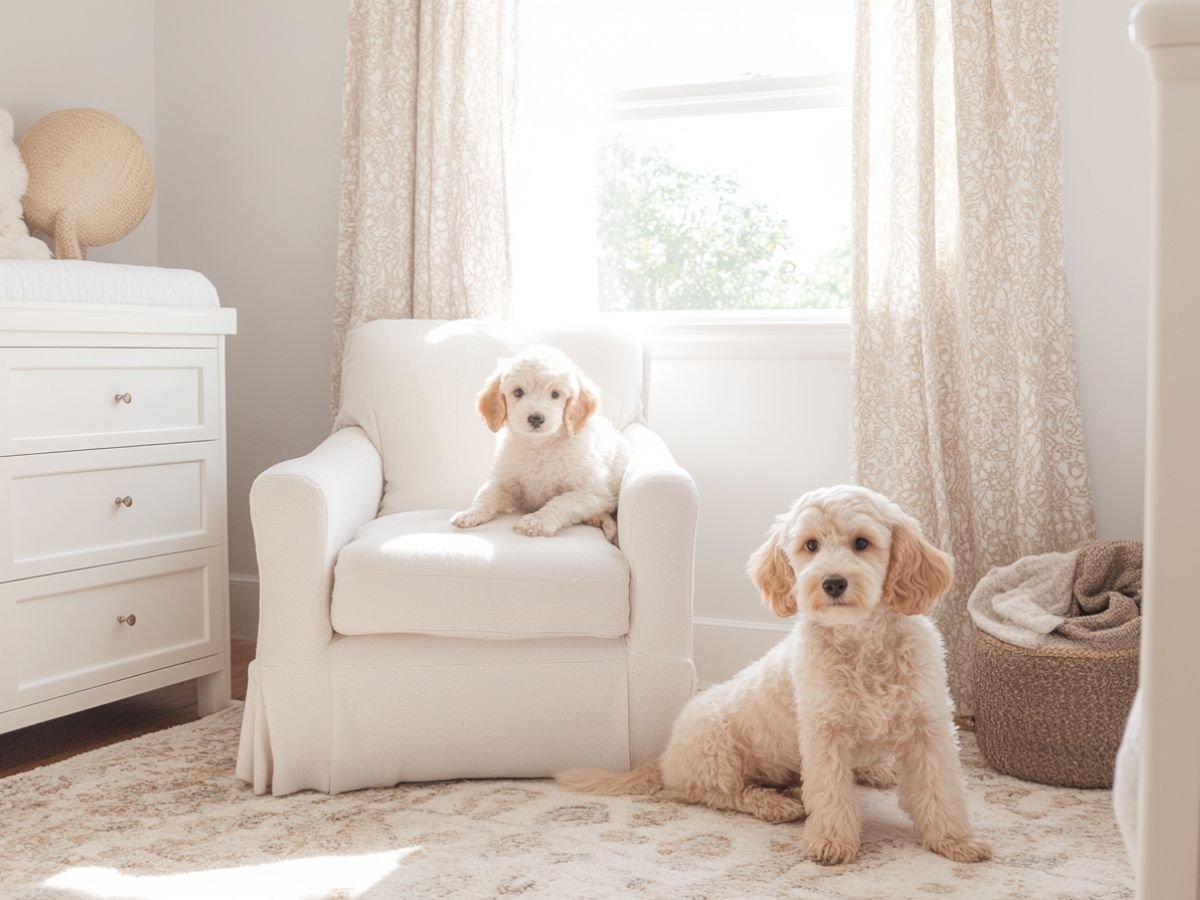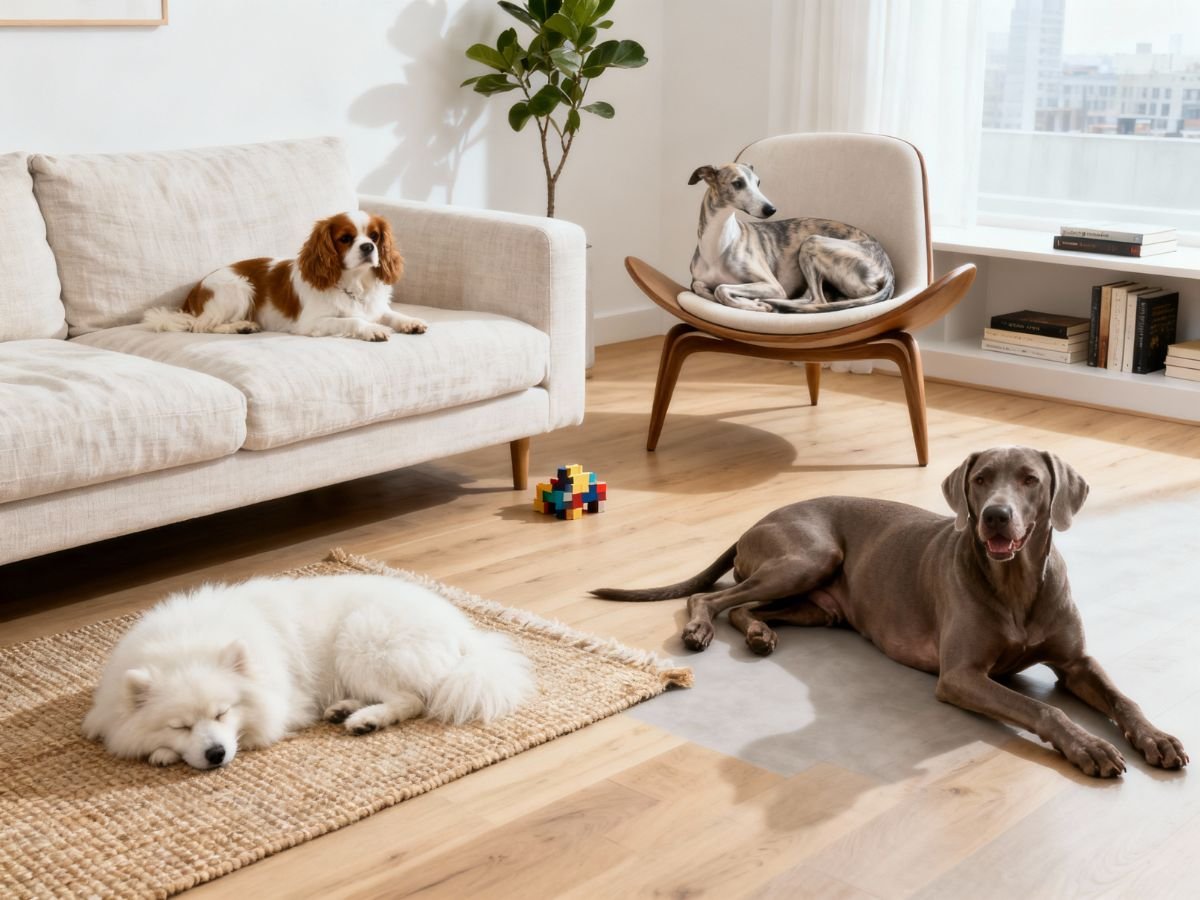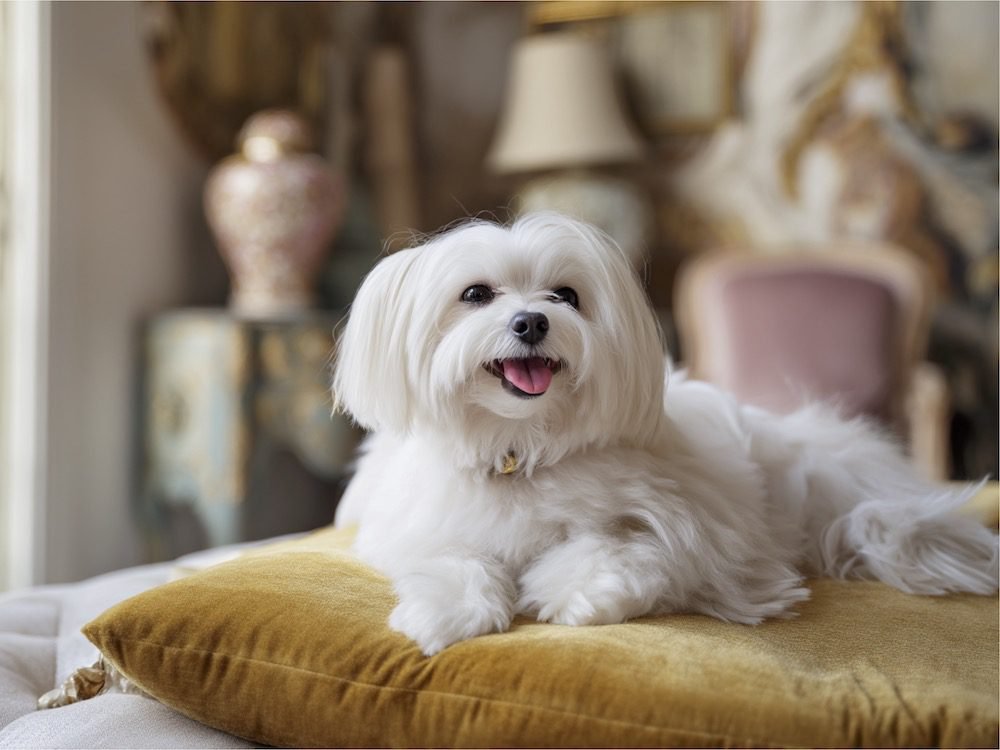Chihuahua Dog Breed Guide (2025): Temperament, Care, Health & Real Costs
Tiny dog, gigantic personality. Let’s find out if a Chihuahua fits your life—without the internet myths and “teacup” marketing fluff.
You keep seeing Chihuahuas on socials—cute, sassy, always smiling— but you’re wondering: will this tiny comedian actually fit our home, noise tolerance, and budget?
Let’s walk through temperament, training, grooming, health, and real costs—so you can decide with confidence.

We’ll talk US‑specific care (heat, insurance, adoption options) with light global context. I’ll keep it friendly, research‑backed, and honest.
FYI: I’ll also say “no” to a few myths (looking at you, “teacup Chihuahua puppies”—not a real thing).
Chihuahua at a Glance

Energy note: Puppies = many micro sessions; Adults = ~45–60 minutes total (split sessions).
Barking† footnote: see my Stop Dog Barking guide for training tips.
| Field | Detail |
|---|---|
| Group & origin | Toy; Mexico (globally recognized by AKC/FCI/KC; smooth & long coats) |
| Size / weight / height | 3–6 lb; 5–8 in at shoulder (FCI: 1–3 kg) |
| Lifespan (avg.) | 12–16 years is common; UK primary‑care data reported a median 8.2 years (methods differ) |
| Coat & shedding | Smooth or long; low–moderate shed; not hypoallergenic (The Kennel Club) |
| Energy (mins/day) | ~45–60 minutes total activity + brain games (split sessions) |
| Trainability | Moderate (short, fun, food‑rewarded sessions win) |
| Barking tendency | High without training/enrichment—very alert |
| Good with kids/dogs/cats | Depends on gentle handling + early socialization |
| Apartment‑friendly | Yes with daily walks + bark management |
| First‑time owner friendly | Depends; easy to lift, easy to spoil—training matters |
| Why people love them | Pocket‑size buddy with stand‑up‑comedian timing. |
Origin & History

The Chihuahua is Mexico’s smallest superstar. Historians link today’s Chi to tiny companion dogs kept by pre‑Columbian peoples; modern show standards took shape in the early 1900s.
The American Kennel Club (AKC) recognizes the breed with a strict 6‑lb cap and a 5–8 in height guide.
The Fédération Cynologique Internationale (FCI) focuses on weight only (1–3 kg), while The Kennel Club (UK) prefers under 2.7 kg (6 lb) and disallows merle coloring.
Two coat types—smooth and long—share the same core build and attitude.
How does that history show up at home? You’ll notice vigilant watchdog vibes (they’ll announce doorbells and delivery vans), a close bond with their favorite person, and a fondness for warm laps and sunny windows.
Temperament & Everyday Behavior

Your first week with a Chi looks a bit like this: a five‑pound shadow glued to your ankles, radar‑dish ears clocking every hallway footstep, and a running commentary for doorbells and delivery vans.
You get cuddles, you get comedy, and—yep—you get opinions. Sound familiar?
Behavior → Fix (quick wins):
• Door alerts → Mat/“Quiet” + treat scatter; mark 2–3 seconds of silence, then stretch the gap.
• Handling sensitivity → Two‑hand pickups and predictable lifts; pair touch with treats; teach a consent cue like “Lift?”.
• Velcro tendencies → Micro‑separations + independent stationing (bed behind a baby gate) with stuffed chews.
• Stranger caution → Let the dog choose; no forced petting; “Look” cue + distance, then gradual approach.
• Weather drama → Warm layers for cold, cooler walks and shade for heat; keep outings short and sweet.
• Prey/chase with small pets → Leash indoors at first, use gates, reinforce calm around cats/rodents; provide “legal” outlets (sniff games, food puzzles).
• Smart problem‑solver energy → 60‑second trick bursts (spin, chin‑rest, hand‑target); rotate food and toy rewards.
Training notes (keep it fun and fast):
• Use tiny, tasty treats and 10–60‑second reps; rotate rewards.
• Skip punishment—arousal spikes = more barking.
• First wins: Name/Recall, Settle on Mat, Quiet/Look to interrupt bark loops.
Socialization focus (weeks 8–20):
• People: calm adults, gentle kids, hats, sunglasses, mobility aids.
• Handling: paws, ears, mouth; consent‑based brushing; brief vet‑hold practice.
• Sounds: doorbells, appliances, traffic; pair each with snacks.
• Species: polite dogs behind gates; slow, barriered cat intros.
Treat “small dog” like “full dog”—clear boundaries + kind training = less noise, more chill, and a confident companion. Monty (my Westie) would back me up on that 😊.
Exercise & Enrichment

Chihuahuas don’t need marathons, but they do need movement and mental work.
Daily dose
• Adults: 45–60 minutes total activity (split walks + training + games).
• Puppies: many short potty/play bursts; no jumping off furniture to protect joints.
• Weather: manage heat with shade/water and cold with a jumper. Tiny bodies lose heat fast.
Great activities
• Sniff walks and scatter feeding
• Short, soft‑toy fetch
• Trick training (spin, chin‑rest, hand‑target)
• Food puzzles, snuffle mats, lick mats
4 quick enrichment ideas
- Muffin‑tin nosework (paper covers + kibble)
- “Find it” treat toss down a hallway
- Cardboard “parcel” to shred around a safe chew
- DIY scent box: cotton pads with a drop of cooled chicken broth (lightly scented)
Grooming, Shedding & Coat Care

Smooth coat: weekly rubber curry + soft cloth wipe.
Long coat: 2–3×/week slicker + comb (check feathering, behind ears, pants).
Bathing: every 4–6 weeks or when dirty; mild moisturizing shampoo.
Nails: every 2–4 weeks (tiny paws overgrow fast).
Ears & eyes: wipe debris carefully; trim flyaway ear fringes on long coats.
Teeth: daily brushing is the the gold standard; plan professional cleanings as your vet advises. Small breeds have higher risk of periodontal disease.
Starter grooming kit (dog supplies): rubber curry, soft slicker, fine comb, styptic, enzyme toothpaste + small brush, gentle wipes, lick mat for cooperative care.
Allergy reality check: Chihuahuas aren’t hypoallergenic. If dander bothers you, commit to frequent cleaning, air purifiers, and brushing outdoors.
Health, Diseases & Lifespan
Lifespan (what the data says): The AKC commonly cites 14–16 years for well‑cared‑for Chihuahuas, while a VetCompass (UK) primary‑care dataset reported a median 8.2 years (females 10.2; males 6.9).
Different samples explain the gap: owner‑reported/show‑leaning vs large general‑practice records that include older, sicker dogs.
Many U.S. family Chihuahuas live into their teens with solid preventive care. Walk with a harness, not a collar to protect that tiny trachea from pressure..
Common issues (toy‑breed trends):
• Patellar luxation (slipping kneecap) — very common in toy breeds; ask breeders for OFA patella results and keep your dog lean to reduce stress on knees. (OFA)
• Tracheal collapse — classic honking cough, worse with excitement or neck pressure; weight control, harness‑only walks, and vet‑guided meds help. (Cornell)
• Mitral valve disease (MMVD) — increases with age in small dogs; early detection + ACVIM‑guided care improves quality of life. (PMC)
• Dental disease — small mouths crowd teeth; ~80% of dogs have periodontal disease by age 3, so daily home care matters. (AAHA)
• Also seen in some lines: Legg‑Calvé‑Perthes, open fontanelle, puppy hypoglycemia, and eye issues.
Call your vet if…
• Cough sounds honky or worsens with excitement → rule out tracheal collapse.
• You hear a new heart murmur, see exercise intolerance, or nighttime coughing → screen for MMVD.
• You notice a skipping/hopping hind gait after play → check for patellar luxation.
• Bad breath, dropping food, or facial rubbing appears → likely dental pain.
What to screen (ethical breeders should show proof):
• Patellas (OFA)
• Cardiac exam
• Eye exam if indicated by line history
Owner Watch‑outs & Typical US Costs
| Condition | Screening/Test | What you watch for | Typical Cost Range (USD) |
| Patellar luxation | Vet ortho exam; OFA patellas | skipping gait, hind‑leg “hop,” post‑play lameness | $1,500–$5,000 per knee if surgery needed Vety |
| Tracheal collapse | Exam; X‑rays ± endoscopy | honking cough, worse with excitement/pressure | Diagnostics $500–$2,000; stent $2,000–$5,000 Embrace |
| MMVD (heart) | Vet listen; echocardiogram if murmur | exercise intolerance, cough, breathing changes | Echo often hundreds–$1,000+depending on region CareCredit |
| Dental disease | Oral exam; dental X‑rays during cleaning | bad breath, tartar, pain, dropping food | Cleanings $170–$2,000+(case‑dependent) GoodRx |
| Legg‑Calvé‑Perthes | Hip radiographs | hind‑limb pain, poor weight‑bearing | $1,200–$2,500 per hip (FHO) Vety |
Preventive plan:
• Twice‑yearly checks for seniors; annual bloodwork as advised.
• Year‑round parasite prevention (heartworm + fleas/ticks).
• Weight control and daily dental care at home; schedule professional cleanings as needed.
Feeding & Nutrition
Keep your Chi at a Body Condition Score (BCS) 4–5/9. You should feel ribs with a light fat cover and see a waist from above.
Life stage
• Puppies: 3–4 mini meals; prevent hypoglycemia with steady calories.
• Adults: usually 2 meals.
• Seniors: watch muscle; consider joint support if your vet suggests it.
Diet picks
Feed an AAFCO‑compliant complete diet matched to life stage. For dental‑prone dogs, your vet may suggest dental diets or VOHC‑approved chews. Keep treats under 10% of daily calories. See my dog treats ideas for specific picks.
Easy monthly habit: weigh your dog, check the BCS chart, adjust portions (not promises).
Training Essentials
House‑training: tight schedule + frequent outdoor trips; celebrate successes. Rain‑shy? Create a covered potty spot.
Alone‑time: start with micro‑absences; pair departures with a stuffed chew.
Crate comfort: soft bed and blanket; build duration slowly.
3 quick wins
- Mat/Place at the door to reduce barky greetings.
- Chin‑rest for vet/groom handling.
- Quiet cue + treat scatter to interrupt alert spirals.
3 common pitfalls
• Carrying everywhere (prevents social learning).
• Laughing off resource guarding because it looks “cute.”
• Over‑reliance on pee pads; teach outdoor skills from day one.
Need help with noise? Read my Stop Dog Barking guide .
Living With a Chihuahua: Fit Check
Home & time: Great for apartments and busy schedules if you deliver daily training and enrichment.
Climate: Manage heat with shade/water; keep winter layers handy.
Travel: Ideal size for road trips; use a crash‑tested carrier or secured crate.
Yes/No checklist
- I can train 5–10 minutes everyday.
- I’ll manage barking with enrichment and routines.
- Kids in the home are gentle and supervised.
- I’ll budget for dental care and possible patella issues.
- I’m home enough to meet social needs.
- I’ll walk on a harness , not a collar.
- I’m okay with a tiny shadow on my lap.
Pros & Cons (Owner‑Dependent)
Pros
• Apartment‑friendly; portable for travel
• Long potential lifespan with good care
• Low exercise ceiling, high fun ceiling
• Brilliant for trick‑training & cooperative care
Cons
• Voicey without management (neighbors will notice)
• Dental care isn’t optional
• Fragile—needs careful kid handling
• Patella/airway risks—plan the budget
Real‑World Costs
Snapshot totals (excludes purchase price and major procedures)
| Budget View | Low | Median | High |
| First‑Year Total* | $1,150 | $2,250 | $3,800 |
| Typical Annual Total | $900 | $1,550 | $2,600 |
First‑Year includes core one‑offs (adoption path), 12 months of food, insurance, parasite prevention, and basic grooming/training supplies. Dental/surgeries not included.
Emergency Fund: Set aside $1,000–$2,000 for unexpected care.
Optional costs: Pet rent $25–$75/mo (+ deposits $100–$500); airline‑approved carrier $50–$150 (plus airline pet fees if you fly).
Insurance note: Recent data pegs U.S. dog insurance at about $56/month on average (plan, state, and age can push higher).
Dental note: Cleanings often include pre‑anesthetic labs (+$80–$200)—budget for it so there are no surprises.
Line‑item ranges:
| Category | Item | Typical Range (USD) |
| One‑off | Adoption/Purchase | $50–$350 (adoption) / breeder prices vary widely Petfinder |
| One‑off | Spay/Neuter | $65–$590 depending on clinic & region Forbes |
| One‑off | Microchip | $20–$40 GoodRx |
| One‑off | Starter kit (crate, bed, bowls, leash, ID) | $100–$250 |
| Monthly | Food | $20–$50 |
| Monthly | Insurance (US) | $46–$56+ average (plan/region dependent) |
| Monthly | Parasite prevention | $10–$25 |
| Monthly/Quarterly | Grooming (long coats) | $0–$60 (DIY to salon) |
| Occasional | Training classes | $100–$250 per 6–8 week course |
| Occasional | Dental cleaning | $170–$2,000+ case‑dependent |
| Occasional | Boarding/pet sitting | $40–$55 per night (region varies) Rover |
What moves the needle? Dental work (big swing), location, and whether you buy boutique gear or keep it minimal.
Adoption & Ethical Breeders
Rescue routes (US):
• Chihuahua Rescue & Transport (CRT) – national foster‑based network; spay/neuter before adoption.
• Regional rescues – e.g., Yankee Chihuahua Rescue (New England).
• Petfinder – set alerts for “Chihuahua” within your ZIP.
Breeder checklist (don’t compromise):
• Proof of OFA patellas, cardiac, and eye testing (CHIC‑aligned).
• Contract with return clause and lifetime support.
• Early socialization plan (surfaces, sounds, gentle handling).
• Transparency: parents available (in person or video); weights within standard.
Red flags:
No health clearances, “teacup/mini/micro” marketing, cash‑only, multiple litters on‑site, no questions for you.
Color note: • AKC/CCA allow many colors/patterns (US show rules).
• The Kennel Club (UK) & FCI disallow merle in Chihuahuas. If you see a “merle Chihuahua,” research extra carefully.
The Chihuahua Club of America outlines CHIC-aligned testing (cardiac, patella, eyes). Use that as your baseline in breeder interviews.
Is the Chihuahua Right for You? (Decision Snapshot)
If you want a loving lap dog with comedian timing, don’t mind daily training and serious dental care, and can protect a tiny body in a big world—you’ll adore a Chihuahua.
Similar Breeds to Consider
• Papillon – lively, great for trick training; similar size.
• Toy Poodle – highly trainable; low‑shed coat, higher grooming.
• Pomeranian – bold personality; fluff maintenance required.
• Miniature Pinscher – spunkier, more exercise; sleek coat.
Ready to Chi?
If your gut says tiny dog, big vibes, you’re probably close—kinda.
Grab a cup, save this guide, then picture your walk tomorrow: harness, quiet cue, smug little strut.
Want more small-but-mighty options? I’ve got you.
Read next → Explore The Best Small Dog Breeds
Love pins? Follow us for fresh, bite-size tips: pinterest.com/WestieWisdom/
FAQs About Chihuahua Dog Breed
1. Do Chihuahuas bark a lot?
They’re naturally alert. With enrichment, mat training, and a Quiet cue, most families keep noise in check. Start routines early and you’ll thank yourself (and your neighbors).
2. Are Chihuahuas good with kids?
Yes—with gentle, supervised kids and clear rules about handling. Their small size makes rough play risky, so set boundaries from day one.
3. Do they shed? Are they hypoallergenic?
They shed light‑to‑moderate, depending on coat type. They’re not hypoallergenic; dander‑sensitive folks should plan extra cleaning and outdoor brushing.
4. How much exercise do they need?
Plan 45–60 minutes of total daily activity split into walks, games, and short training. Puppies need many mini sessions, not big outings.
5. What’s the deal with “teacup Chihuahuas”?
“Teacup” is a marketing term, not a recognized size. Ethical breeders follow the standard and screen health. Super‑tiny pups often face extra risks (hypoglycemia, injury).







